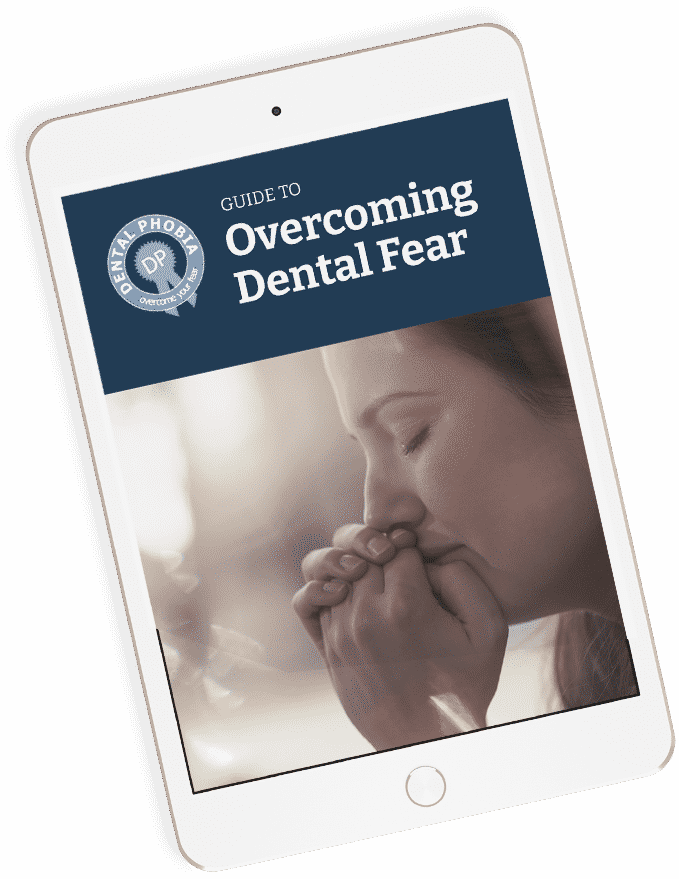

Fear of visiting dentist
Sometimes, one of the biggest challenges that a dentist has is when a patient with a phobia cannot necessarily articulate where their fear comes from.
Nobody likes going to the dentist. But for some people, the problems run deeper and form a phobia. The causes of dental phobia can be many and varied. This case study looks at a patient for whom the phobia was non-specific; but for whom visiting the dentist had become virtually impossible.
The Patient
Sometimes, one of the biggest challenges that a dentist has is when a patient with a phobia cannot necessarily articulate where their fear comes from. This makes the phobia more difficult to understand and manage, and is often the case when the phobia is based around a long-distant childhood memory. The patient does not necessarily need to be conscious of the memory for it to influence their behaviour as an adult.
This was the problem for Amy, a female patient in her early forties who had struggled for a long time with visiting the dentist. In many ways, her phobia had become all the more powerful because she did not understand it fully. Rather than trying to understand her phobia, Amy chose to ignore it and visited the dentist less and less. In this case, for Amy, the sights, sounds and smells of the dental practice proved to be powerful environment triggers. She was not sure what exactly the experience was that caused her to become dental phobic. But as an adult, simply evoking the images, sounds and smells that are associated with dentistry were enough to provoke feelings of real anxiety and panic.
The Scenario
A survey by the British Dental Association found that fear of the dentist affects one in four people. However, it is likely to be a much higher figure in reality, as many people, like Amy, refuse to admit their fear. Instead, because they are confused by their phobia, they blame their inability to visit the dentist on other factors, such as cost or time.
For Amy, part of the problem was that she had not been the dentist for such a long time, so she didn’t realise just how much dental work (and dentists!) have changed. Modern practices now offer many more ways to help patients to control their anxiety and to manage their phobia. In fact, a fear of visiting the dentist has now been broken down into three classifications, which helps both dentists and patients to understand what is driving their fear and how deep-seated their phobia is. For a patient like Amy, whose phobia is hard to understand, these classifications can help to identify what sort of help she needs.
For example, Amy may have labelled her condition a phobia by herself. It’s something we all do – ‘I have a phobia of flying’, ‘I have a phobia of spiders’, ‘I have a phobia about the dark’. In reality, what Amy could be talking about is simply a fear of the unknown. Alternatively, dentists also talk about Dental Fear as opposed to phobia, where people know why they are afraid of the dentist and have a clear, rational reason for not returning. Finally, there is Dental Phobia.
Dental Phobia is similar to dental fear but more severe. It is also often the product of a bad past experience. For some people, dental phobia can be so debilitating that just thinking about a dental visit can cause distress. Clearly, for any patient in this type of scenario, understanding and classifying their fear is a good start in trying to face up to it.
The Symptoms
The first step for Amy was to understand her fear and to identify where she was on the above classification. During a full consultation with her dentist, she identified her primary symptoms as anxiety, stress and fear and spent time with the dentist to try to understand what triggers them.
For Amy, these triggers were identified as a number of different things which all usually combine to create the dental experience. Sounds, such as a dental drill, caused her anxiety. It’s worth remembering that a drill inside your mouth will sound a lot louder and scarier than it actually is. In fact, someone like Amy who has not visited a dentist for a long time are often surprised at how much quieter they are. Modern equipment makes a significant difference.
Similarly, modern dental practices are far more customer friendly in terms of sights and smells, simply because dentists now understand more clearly how to help patients with dental phobia. For example, Amy was able to agree with her dentist that sharp tools would not be visible when she entered the surgery. These days, the smell of antiseptic does not linger so heavily either, which made a big difference to how she felt and how she managed to control feelings of nausea.
As well as sound, smell and sight, touch was also an important trigger for Amy. This was also identified during the consultation stage. If Amy felt that the dentist was not approaching her with care and was not aware of her phobia, she became even more stressed. She needed to communicate to her dentist just how she felt, so that he could adapt his behaviour and put her far more at her ease. In an ideal practice, the dentist will explain procedures beforehand, so patients know exactly what is going to happen next.
The Solution
For many patients (and this was indeed the case with Amy), the secret to managing their dental fear or phobia is as simple as finding a dentist that they feel comfortable with. In modern practices, most dentists will be trained to support patients suffering from stress, anxiety or fear, whether that involves consultation, communication, distraction or behaviour management. Often, especially if it is a patient suffering from a fear of the unknown, a dentist who does not take the time to explain procedures and to ensure that their patient feels comfortable with them, will only worry the patient more. This can lead to the kind of behaviour that Amy showed, where she worried more and more and then felt less and less comfortable visiting the dentist as time went on. A good dentist will begin building a relationship at consultation stage which means that their patients trust them, understand them and know what their treatment involves. If they choose not to address the fact that their patient is afraid, then they risk losing a customer as the fear drives that patient away.
This consultation was the start for Amy’s solution, not simply so she understand her fear more but also so she got to know her dentist and relax more. Other patients also find it beneficial to register with a dentist who specialises in treating dental phobic patients. Dentists with particular skills in this area will be certified and they will be able to work with individuals to discuss their fears and outline different possible treatments. In most cases, this will go beyond simple behavioural management and will also include considering the most up-to-date products on the market, which help to reduce pain, for example.
The final part of a possible solution could be counselling, therapy or hypnosis, conducted by a certified professional. This should only be applicable to patients suffering from a deep-seated dental phobia. In the majority of cases, the starting points of patients would be to speak to their dentist, rather than a doctor. As dental phobias become more widely understood, more and more dentists are becoming familiar with how to treat them effectively.

